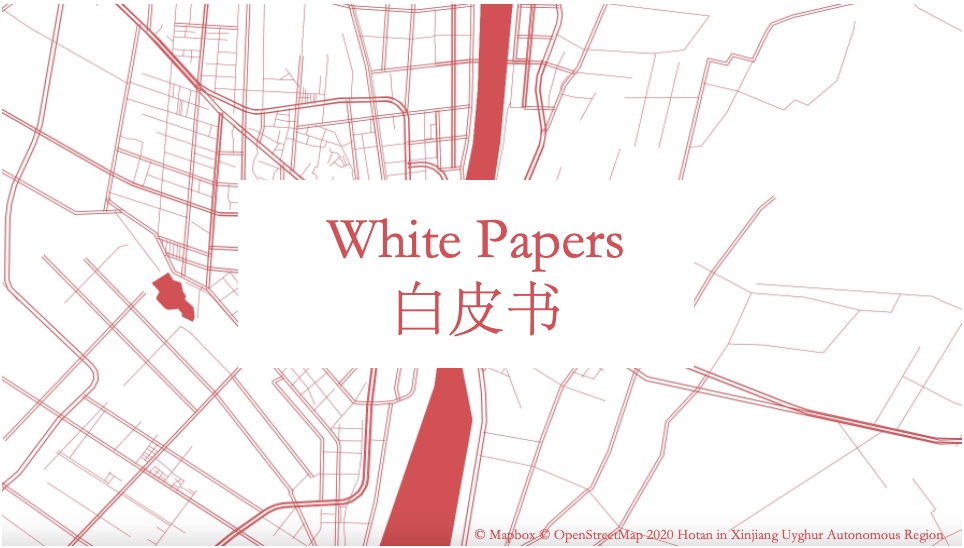Introduction
This collection presents summaries of the White Papers, which are reports published in English by the State Council Information Office of the People’s Republic of China to explain and justify policies in Xinjiang. Each entry in the collection features textual analysis of key terms by frequency and a word cloud.
Xinjiang Population Dynamics and Data (September 2021)This paper presents population and data statisitics regarding those living in Xinjiang, focusing on seven major areas of development. |
Respecting and Protecting the Rights of All Ethnic Groups in Xinjiang (July 2021)This paper outlines seven rights and protections given to ethnic minority groups living in Xinjiang. |
Employment and Labor Rights in Xinjiang (September 2020)This paper examines the current state of employment rates, labor rights, and poverty elimination strategies in Xinjiang. |
Vocational Education and Training in Xinjiang (August 2019)This paper outlines the effectiveness of the “vocational education and training centers” in stemming the spread of religious extremism in Xinjiang. |
Historical Matters Concerning Xinjiang (July 2019)This paper emphasizes the inseparability of Xinjiang with China. |
The Fight Against Terrorism and Extremism and Human Rights Protection in Xinjiang (March 2019)This paper highlights the threat of terrorism in Xinjiang and refutes any arguments in favour of Xinjiang sovereignty. |
Cultural Protection and Development in Xinjiang (November 2018)This paper illustrates examples of coexistence between Chinese and Uyghur cultures. |
Freedom of Religious Belief in Xinjiang (June 2016)This paper provides examples of inter-and intra-religious conflict in Xinjiang and the surrounding region. |
Historical Witness to Ethnic Equality, Unity and Development in Xinjiang (September 2015)This paper focuses on ethnic unity in Xinjiang and highlights the need to promote regional autonomy in regions with ethnic minorities. |
The History and Development of the Xinjiang Production and Construction Corps (October 2014)This paper argues the importance of establishing Xinjiang Production and Construction Corps (XPCC) in the Chinese frontiers. |
Development and Progress in Xinjiang (September 2009)This paper examines the progress and development in Xinjiang as an example of the success of China’s policies on ethnic minorities. |
History and Development of Xinjiang (May 2003)This paper discusses the coexistence of Chinese minorities and relations between China’s western regions and the Central Asian states. |
